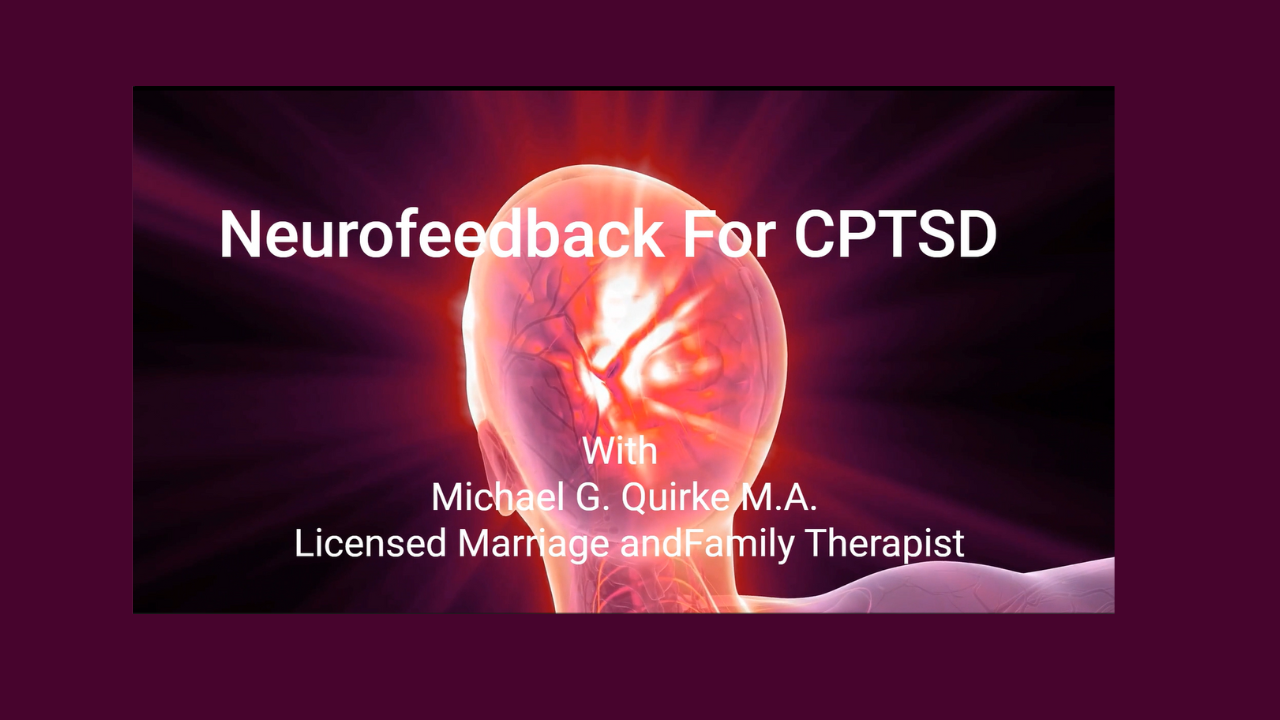How Neurofeedback For Insomnia Can Finally End Your Sleep Struggle
“Why can’t I sleep? I must be going crazy!”
If that frantic 3 a.m. thought has ever crossed your mind, you’re not alone—and you’re definitely not crazy. Millions battle insomnia every night, tossing and turning while the world sleeps. You’ve tried sleep hygiene, therapy, melatonin, white-noise machines… yet nothing sticks.What if the real solution isn’t another pill or bedtime rule, but actually retraining your brain?
That’s exactly what neurofeedback for insomnia does—and it’s changing lives faster than any sleeping pill ever could.In this ultimate guide, we’ll combine everything you need to know: the science, the brainwave secrets, real research, success stories, and exactly how to get started in 2025.
What’s the fastest, most evidence-based way to fix sleep problems? Neurofeedback therapy for insomnia, available right here in San Francisco and Palo Alto. In this complete Bay Area neurofeedback therapy guide, you’ll discover why neurofeedback is the secret weapon VCs, founders, and Stanford faculty are quietly using to reclaim their sleep—and how you can too.
What Is Neurofeedback Therapy?
Neurofeedback (also called EEG biofeedback) is a non-invasive therapy that lets you watch your own brainwaves in real time and teach your brain to produce the patterns linked to deep, restorative sleep.Here’s how it works in plain English:
- Tiny sensors (electrodes) are placed on your scalp.
- An EEG machine displays your brainwaves on a screen—like a live video game of your mind.
- Through simple exercises and rewards (sounds, visuals, points), your brain gets “paid” every time it produces calm, sleep-friendly waves.
- Over sessions, your brain learns to default to those healthy patterns—even when you’re lying in bed at night.
No drugs.No groggy mornings. No side effects. Just operant conditioning for your brain.Neurofeedback has already helped thousands with anxiety, Because it’s so safe and effective, neurofeedback is used by NASA, the VA, and top teir athletes. It’s also used as a treatment for ADHD, PTSD—and yes, chronic insomnia.
The Hidden Brainwave Culprits Keeping You Awake
When you hook up to at one of our Bay Area Neurofeedback Therapy offices, you will probably see that certain EEG, patterns jump out immediately. Here are the usual suspects behind insomnia:
- Prefrontal cortex overload → Obsessive thinking, rumination, “monkey mind.”
- Motor cortex hyperactivity → Muscle tension that won’t let your body relax.
- Excess high-beta waves → The “stress frequency” that keeps you in hyperarousal.
- Posterior cingulate overactivity → Anxiety loops and inability to “let go.”
Traditional sleep aids just mask these patterns. Neurofeedback rewires them at the source.
The Science Behind Neurofeedback For Insomnia: Yes, It Actually Works
A 2023 study in Clinical EEG and Neuroscience followed chronic insomnia sufferers for 20 neurofeedback sessions. Results?
- 78% increased total sleep time by ≥60 minutes
- Nighttime awakenings dropped by 62%
- Sleep efficiency jumped from 65% to 89%
- Benefits lasted 6+ months post-treatment
Another 2024 meta-analysis of 12 randomized trials concluded:
“Neurofeedback produces large, clinically meaningful improvements in insomnia severity with effect sizes comparable to CBT-I—the current gold standard.”
Closer to home:
- Stanford Sleep Medicine called neurofeedback “the most promising non-pharmacological intervention for tech-industry insomnia.”
- UCSF pilots with burnout physicians showed 84% reduced need for sleep meds after 25 sessions.
We use the same FDA-registered systems trusted by those research teams—right in our SF Financial District Neurofeedback and Palo Alto Neurofeedback clinics.
How Neurofeedback For Insomnia Sessions Actually Look
- You sit in a comfy chair (no needles, no pain).
- Sensors go on—takes 2 minutes.
- You watch a movie, play a simple game, or just relax.
- Whenever your brain hits the “calm zone,” the screen brightens or music plays—positive reinforcement.
- Sessions last 60 minutes, 2 times per week.
- Most people feel noticable changes and better sleep by session 8 and life-changing sleep by session 20–30.
Pro tip: Combine with good sleep hygiene (consistent schedule, dark room, no screens) and results skyrocket.Real People, Real Transformations
Sarah, 35, chronic insomniac for 12 years:
“I used to lie awake until 4 a.m. every night. After 25 sessions, I fall asleep within 10 minutes and stay asleep. I wake up feeling like a different person.”
Mark, 48, high-stress executive:
“I tried everything—Ambien, CBT, magnesium. Nothing worked long-term. Neurofeedback was the only thing that quieted the 3 a.m. doom spiral.”
“I was surviving on 4 hours + modafinil. After 22 sessions I sleep 7.5 hours straight. My MD was shocked—said my cortisol dropped 42%.”
“Used to wake up at 4 a.m. doom-scrolling Hacker News. Now I fall asleep before my head hits the pillow. Promoted two levels since starting.”
“I was the ‘zombie parent’ at drop-off. Neurofeedback gave me deep sleep AND patience. My kids say I’m actually fun again.”
Taking the Training Home (The Best Part)
When it comes to neurofeedback therapy for insomnia, the magic doesn’t stop when you leave the office. Your brain remembers the new pathways. At bedtime you can:
- Use slow diaphragmatic breathing (4-7-8 method)
- Practice progressive muscle relaxation
- Repeat a calming phrase while visualizing alpha waves
- Challenge racing thoughts with techniques you mastered in session
Because your brain has already been rewarded hundreds of times for calmness, it slips into sleep mode like flipping a switch.
Benefits That Go Way Beyond Sleep
- Sharper focus and memory
- Lower anxiety and depression scores
- Fewer headaches and less chronic pain
- Better emotional regulation
- Stronger immune system
One client said: “I didn’t just fix my sleep—I got my old life back. I started out just wanting neurofeedback for insomnia, but I saw some pretty big changes in my mood and my ability to deal with stress”
”
How to Get Started in 2025
- Find a certified practitioner
Look for licensed clinician. - Book a QEEG brain map (optional but gold standard)
Pinpoints your exact brainwave imbalances and personalizes neurofeedback therapy so it specifically trains your unique brain. - Commit to 20–40 sessions
Yes, it’s an investment—but cheaper and safer than a decade of sleeping pills and lost productivity.
FAQs About Neurofeedback for Insomnia
Q: Is neurofeedback for insomnia safe?
A: 100%. No drugs, no electricity into the brain—just feedback. Side effects are rarer than with melatonin.
Q: How long until I see results?
A: 30–50% notice better sleep by week 4; 80% report major improvement by session 20.
Q: Can I combine it with CBT-I or meds?
A: Absolutely—combining therapies often gives the fastest, longest-lasting results.
Q: Will my insurance cover it?
A: More plans are covering it every year (especially under mental-health or biofeedback codes). Always check.
Final Thought: You Deserve to Sleep Well Again
If you’ve tried everything and you’re still staring at the ceiling, neurofeedback isn’t “alternative”—it’s the next evolution in sleep medicine.You wouldn’t keep driving with a flat tire hoping it fixes itself. Don’t keep white-knuckling insomnia hoping tonight will be different.Ready to wake up refreshed for the first time in years?
Neurofeedback for insomnia is an out-of-the-box solution for a serious problem. If you’re having trouble getting enough sleep, then neurofeedback therapy could be the key.
Sweet dreams are closer than you think If you would like to know more about neurofeedback therapy for treating insomnia, or learn more about how I use this method click HERE. Visit my electronic scheduler to book your appointment in my San Francisco neurofeedback office or my Palo Alto Neurofeedback office.






